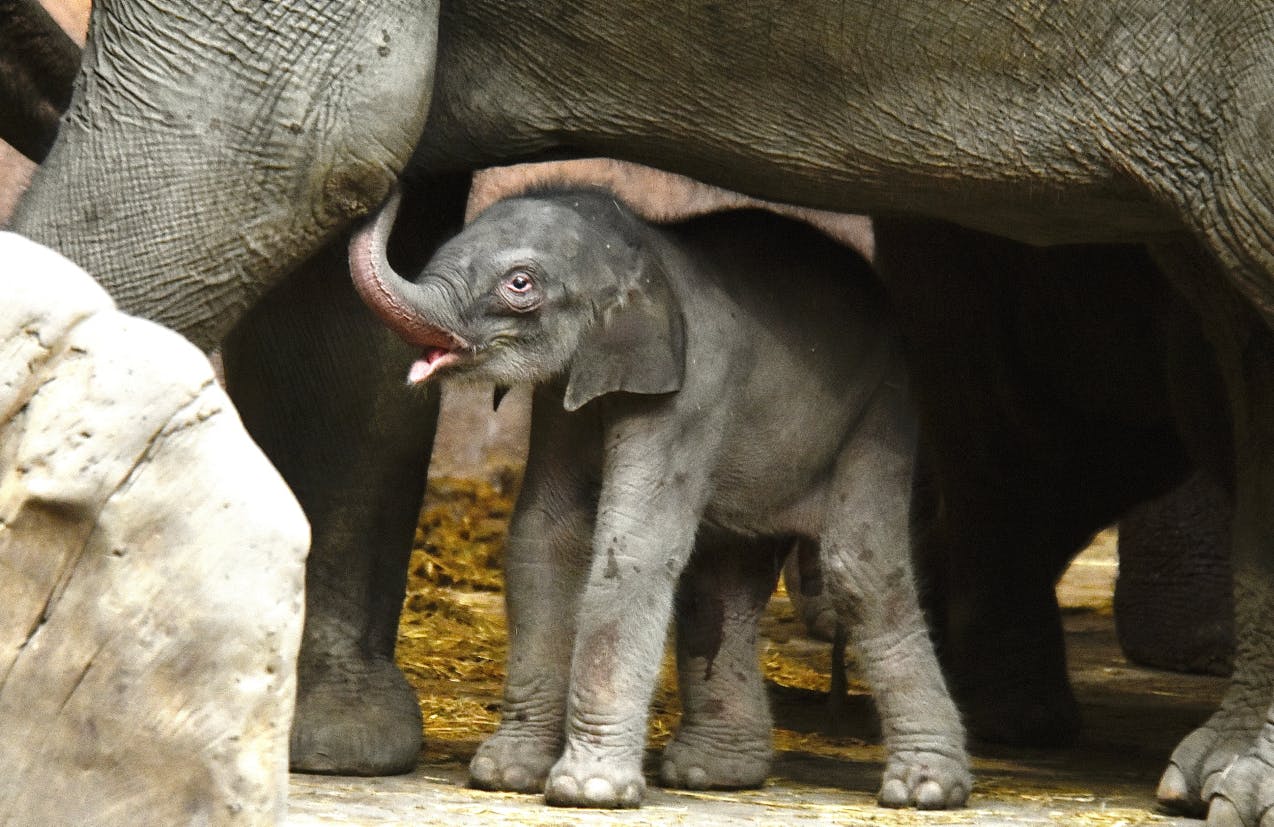

Asian elephant born






MONDAY, OCTOBER 10: COME VISIT A BABY
You can come for a visit to see the baby elephant. In this video, you can witness the delivery of mother Faya and the first steps of her son. The elephants form a close, social family. They stay close together and protectively surround the calf. The inexperienced Faya receives a lot of support from her mother Bangka, who has already raised three healthy calves. It's her first offspring, but she's doing a great job already.
SUNDAY, OCTOBER 9: ELEPHANT BORN
At Diergaarde Blijdorp, an Asian elephant was born last night (October 9) at 4:08 am, a male. It's the first offspring for mother Faya. Mother and calf are doing well. They are given all the peace today to get used to each other. The indoor enclosure Taman Indah is therefore closed to the public. No baby visits are possible today, but you can follow the elephant family live from 10 a.m. via the webcams.
This marks the sixteenth healthy elephant born in Rotterdam. Thankfully, the delivery went smoothly. An elephant baby weighs about 80 kilograms at birth. Elephant pregnancies last between 22 to 24 months. So, it's been quite a wait...
Social Structure
The calf was born indoors, within the group, consistent with the natural situation. Faya is well supported by her mother Bangka, who has become a grandmother for the first time. The Blijdorp family has a tight social structure. Currently, Blijdorp houses seven elephants: the Irma family line with Irma, Faya, and Bangka, the little Radjik, and the newest addition. Four generations are represented in Blijdorp, a rather unique situation globally. Separate from the family are two female elephants: Trong Nhi and Nhi Linh. A bull (male elephant) doesn't involve himself in upbringing and lives separately from the family, both in zoos and in the wild. He seeks the females only during mating time. The father, Fahim, came to Rotterdam specifically for mating but has since moved to Copenhagen.
Young offspring are vital for the international Population Management program, coordinated by Diergaarde Blijdorp since 1991, and for the fertility preservation of the adult females. If a female elephant gets offspring too late or not at all, she might lose her fertility. Different generations are also essential for the hierarchy in a social group. Young females learn from an experienced mother how they can raise their offspring later.
Threat
The Asian elephant has disappeared from 85% of its original range. Currently, the number of wild Asian elephants is estimated between 30 and 50 thousand. It might seem like a decent number, but the wild populations are very fragmented. The largest wild population, consisting of 8,000 animals, resides in India.
Large-scale DNA research
Researchers from Wageningen University and Research and Diergaarde Blijdorp are collaborating on a comprehensive study into the genetic health of Asian elephants. The Dutch Organization for Scientific Research (NWO) has granted a scholarship for this: a unique collaboration. Various European zoos, including Blijdorp, provide elephant blood samples for this research. For genetic data from wild populations, collaboration is underway with the NCBS research institute in India. In this way, Blijdorp contributes to the survival of this iconic endangered species and the preservation of biodiversity.
